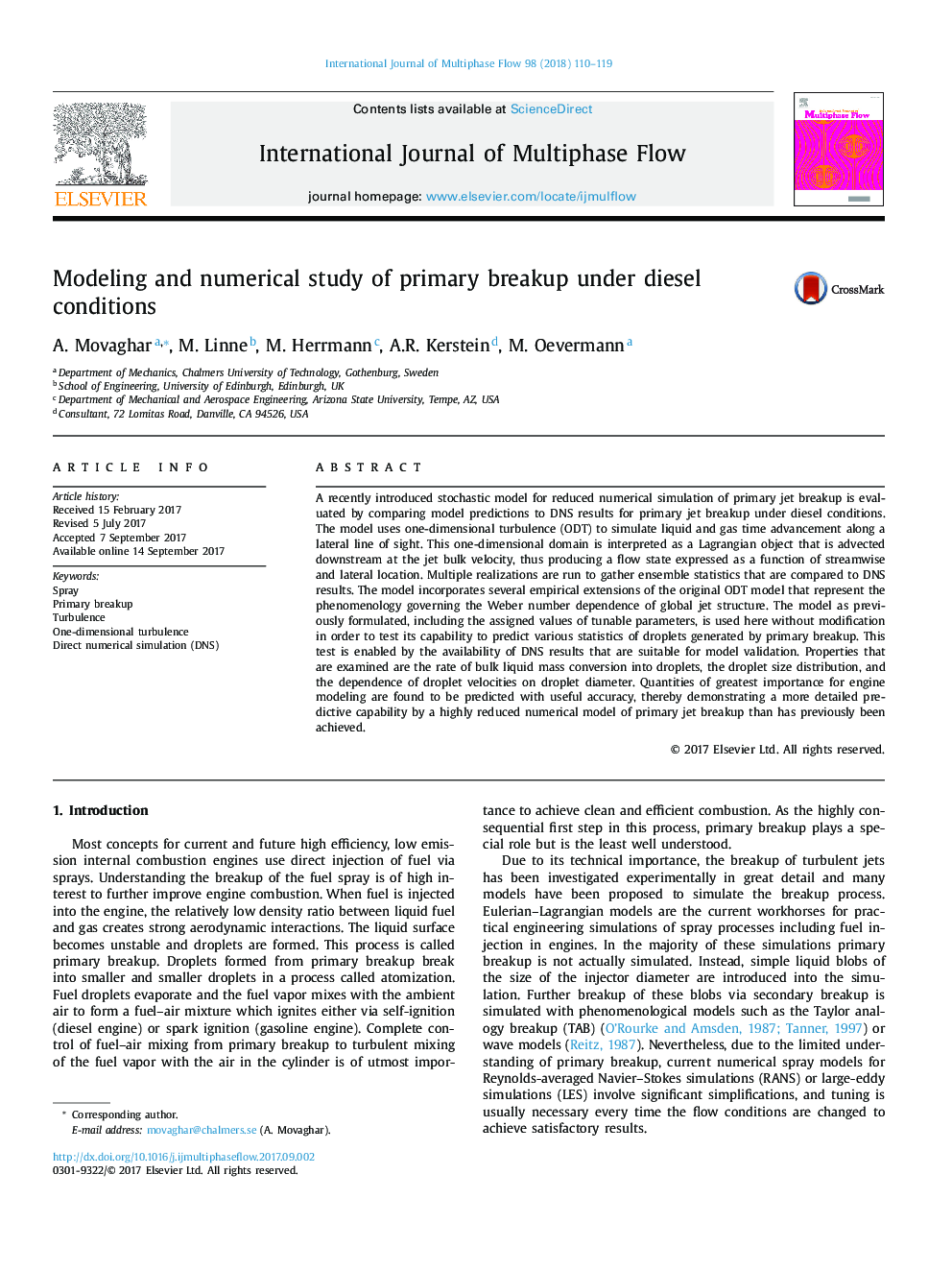| Article ID | Journal | Published Year | Pages | File Type |
|---|---|---|---|---|
| 4994853 | International Journal of Multiphase Flow | 2018 | 10 Pages |
A recently introduced stochastic model for reduced numerical simulation of primary jet breakup is evaluated by comparing model predictions to DNS results for primary jet breakup under diesel conditions. The model uses one-dimensional turbulence (ODT) to simulate liquid and gas time advancement along a lateral line of sight. This one-dimensional domain is interpreted as a Lagrangian object that is advected downstream at the jet bulk velocity, thus producing a flow state expressed as a function of streamwise and lateral location. Multiple realizations are run to gather ensemble statistics that are compared to DNS results. The model incorporates several empirical extensions of the original ODT model that represent the phenomenology governing the Weber number dependence of global jet structure. The model as previously formulated, including the assigned values of tunable parameters, is used here without modification in order to test its capability to predict various statistics of droplets generated by primary breakup. This test is enabled by the availability of DNS results that are suitable for model validation. Properties that are examined are the rate of bulk liquid mass conversion into droplets, the droplet size distribution, and the dependence of droplet velocities on droplet diameter. Quantities of greatest importance for engine modeling are found to be predicted with useful accuracy, thereby demonstrating a more detailed predictive capability by a highly reduced numerical model of primary jet breakup than has previously been achieved.
